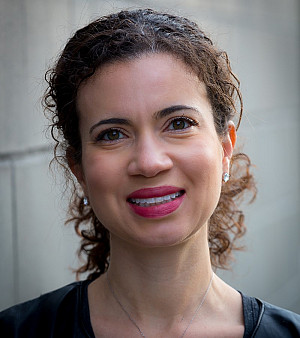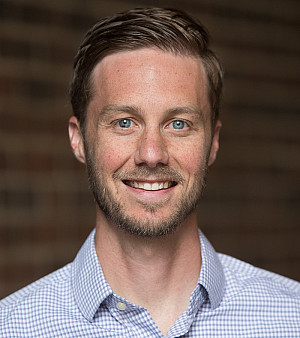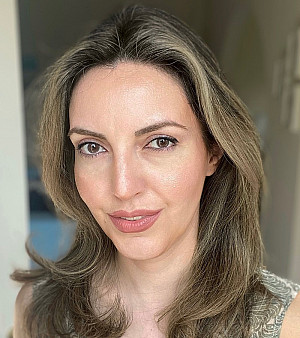Meet 3 new IU Bloomington faculty members
By IU Bloomington Today
September 01, 2023
Thousands of new Indiana University Bloomington students started fall semester classes recently, but so did a cohort of more than 300 new faculty members.
Among the 350 new faculty:
- 37% are tenured or tenure-track faculty and librarians.
- 30% are researchers.
- 21% are visiting faculty and visiting librarians.
- 12% are lecturers, clinical faculty and professors of practice.
The cohort represents 39 countries. Fifty-two percent are women, and 43% of the new faculty are people of color.
“I am incredibly excited to welcome this outstanding group of new faculty,” said Carrie Docherty, vice provost for faculty and academic affairs. “By any measure, this is one of the most diverse cohorts to join our world-class faculty. And I look forward to seeing what great things they will accomplish as they integrate into our community of scholars.”
IU Bloomington Today caught up with three new faculty members to learn more about them, their research and their thoughts about the campus and community.
Natalie Boeyink
Associate professor of music in jazz, Jacobs School of Music

Question: What interested you about coming to Indiana University?
Answer: As a twice-over graduate of IU, the opportunity to return to my musical home, continue the legacy of David Baker and be part of shaping the future of the Jazz Studies Program were all of great interest to me. With the reputation of the Jacobs School of Music, and the caliber of students and faculty, I was motivated to seize the opportunity to return to Indiana.
Q: How will working at IU aid your research, which is one of the pillars of the IU 2030 strategic plan?
A: Indiana University has a wealth of unique resources that will be integral to my research and creative agendas. Between the Latin American Music Center, Cook Music Library and Archives of Traditional Music, I’ll have access to information, musical scores and recordings not available elsewhere.
The institutional recognition that accompanies IU and the Jacobs School of Music will also open doors for me, whether conducting research on other campuses or collaborating with musicians nationally and internationally.
Q: What goals do you have for your teaching and research?
A: One of my goals for teaching is to design a curriculum that students will find relevant, transformational and challenging. I want to teach them to look beyond what is first offered as definitive information and to think about the voices that have historically been silenced and undervalued. Another goal I have is for the students to complete my courses hungry for more, with the knowledge and ability to continue pursuing answers to their remaining questions.
With my research, I want to continue building on the experiences of jazzwomen and bring it current by examining the impact of recent efforts by organizations and institutions to be more inclusive and equitable. The pedagogy of Latin American popular music styles (particularly Brazilian) has been another research interest of mine, and I plan to compare how these styles are taught in-country with how they are taught in the United States. On the creative side, I’ll be working on composing new music to be featured on my own album, and for Batuquê Trio.
Daniel Loveless
Associate professor, Department of Intelligent Systems Engineering, Luddy School of Informatics, Computing and Engineering

Q: What interested you about coming to Indiana University?
A: The new investments in advanced semiconductor devices and the need for highly skilled electronics engineers, especially in space and defense applications, have invigorated my field of study in unprecedented ways. IU and the state of Indiana have seized the opportunity to be leaders in microelectronics, especially suited to the needs in the space and defense sectors.
The strengthening partnership with Crane, for example, will provide new resources, opportunities and sustained growth that will ultimately enable our current and future students to be the next-generation leaders. There is an energy here unlike anything I have experienced in my career, and I am excited to be a part of it.
Q: What goals do you have for your teaching and research?
A: I would like to see these initiatives result in the creation of a new center of excellence at IU focused on microelectronics design, with close partnerships with our neighboring institutes. Further, opportunities for students are currently quite staggering; I hope to see increased engagement with industry and government constituents as our new coursework and workforce develop programs begin to emerge.
Q: What are your interests and hobbies outside of academia?
A: I love spending time outdoors with my two wonderful kids and life partner, Mary. I spend most mornings running, cycling or swimming. I’ve enjoyed getting to know Bloomington by running through town. And I always find time to write and play music, guitar being my favorite instrument. When I am in the lab, it is creative engineering; outside of the lab it’s all arts and music.
Bonnie Nozari
Professor, Department of Psychological and Brain Sciences, College of Arts and Sciences

Q: How will working at IU aid your research, which is one of the pillars of the university’s 2030 strategic plan?
A: I work on the neural and computational structure of the language processing system, and how it breaks down after brain damage. This means that my work connects several fields, including psychology, neuroscience, linguistics, artificial intelligence and medicine. IU is the perfect environment for this work. Aside from my home department, Psychological and Brain Sciences, I am also part of the broader Cognitive Science Program, the goal of which is precisely to facilitate this kind of interdisciplinary research.
I also have close connections with the Department of Speech, Language and Hearing Sciences, which has a clinic for people with language processing problems. In addition, I am in the process of making connections with neurologists and neurosurgeons on the Indianapolis campus. To top this all, I am also forming ties with departments such as Linguistics, Second Language Studies and Asian Languages and Cultures, among others. My hope is to launch a Language Processing Brown Bag, a talk series in which anyone on campus who works on some aspect of language processing can share their research with others.
Q: What goals do you have for your teaching and research?
A: The ultimate theoretical goal of my research is to understand how humans translate thoughts into words and sentences and communicate those thoughts successfully. An accompanying clinical goal is to help people who have lost their ability to speak because of brain damage, like stroke, to regain as much of their communicative abilities as possible.
As for teaching, I teach both undergraduate and graduate courses, and they follow slightly different goals. My favorite undergraduate course to teach is cognitive psychology. It introduces students to the truly magical world of human cognition with its many mysteries and wonders. The goal here is to instill in them the same curiosity and enthusiasm that connected me to cognitive psychology.
With graduate students, I teach upper-level seminars. These are usually cutting-edge topics in the field of cognitive science, sometimes directly related to my field of work, language, and sometimes a step removed, such as metacognition. The goal here is to push the boundaries as much as we can, analyze the materials critically, generate new ideas and perhaps even integrate those ideas in our own research.
Q: What are your interests and hobbies outside of academia?
A: One of Bloomington’s biggest attractions for me was the Jacobs School of Music. I have training in classical music and hope to continue my musical education in some capacity. In addition to classical music, I like theater and good cinema. I am also an avid reader and enjoy the company of philosophers, writers, poets, historians and anyone who is interested in expression and documentation of human thought and experience.
